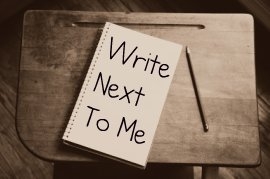Writing to Learn
“We want to be crystal clear: writing to learn activities are different from the more formal or public writing tasks teachers commonly assign students – like term papers, research reports, and essays.”
Daniels writes, “Writing to learn activities are short, spontaneous, exploratory, informal, personal, one draft, unedited and ungraded.”
Writing to learn pieces are for the student, not the teacher. Just as a grocery list helps the homeschool mom accomplish her weekly shopping, a writing to learn strategy is designed to aid the student’s ability to do their job - learn.
By means of example, a common writing to learn strategy is an Exit Slip. At the close of a subject, the student might write on a prompt like:
- What did you learn today?
- Predict what you will need to learn next.
- What do you need to focus on to learn today’s lesson?
Students can write their exit slip on a 3x5 index card or even on the bottom of a workbook page. The exit slip is not graded by the parent, but rather allows the child time to stop, reflect, think, and process.
A writing to learn activity can be used across the curriculum. The homeschool teacher is at a real advantage in maximizing this tool for learning. Writing to learn strategies accomplished at the beginning or end of a subject can help both parent and child move from one subject to the next, increasing the amount of writing accomplished in a day.
Writing to learn strategies can be found in Writing Assignments and The University of Richmond Writing Center has compiled a list of writing to learn activities and directions for their use.






